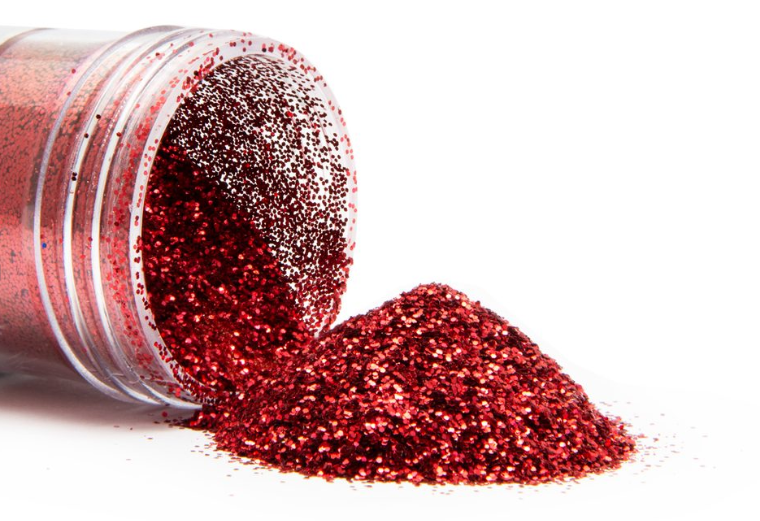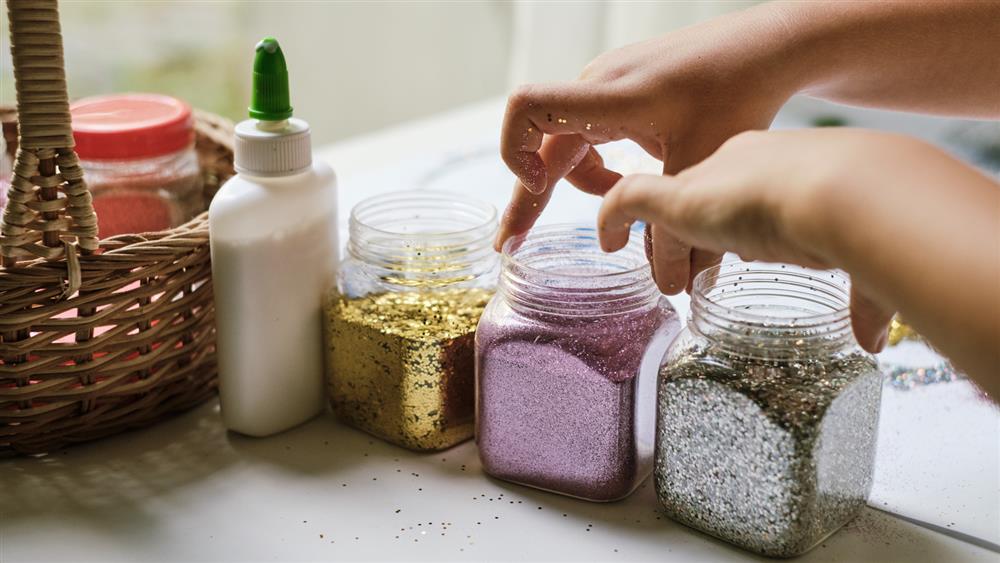The Ban on Loose Glitter!

Glitter, with its shimmering allure and ability to instantly elevate the mood of any event of DIY project, has been a beloved artistic tool for generations. Yet, in recent years, a growing environmental concern has led to the banning of loose glitter in various regions worldwide. This contentious issue raises questions about the environmental impact of glitter, its alternatives, and the balance betweeen artistic expression and ecological responsbility.
Loose glitter is typically made of tiny particles of plastic known as microplastics, Its miniscule size, which adds to its appeal, also contributes to its environmental threat. When glitter finds its way into the environment, it can have detrimental consequences. These microplastics can pollute water bodies, harm wildlife, and ultimately enter the food chain, impacting human health.
Environmental Issues

1. Water Pollution: Loose glitter, when washed off, often ends up in wastewater systems, making its way to rivers and oceans. The persistent nature of microplastics means they can endure in the environment for hundreds of years, causing long-term pollution issues.
2. Harm to Wildlife: Marine animals and birds often mistake glitter particles for food, which can lead to ingestion and harm. This ingestion can distrupt ecosystems and endager species.
3. Human health concern: As microplastics work their way up the food chain, they can potentially pose health risks to humans who consume seafood contaminated with these particles.
The Ban

Given the environmental consequences, several regions have initiated bans on the sale and use of loose glitter. For instance, in 2018, the UK banned the use of microbeads, which included glitter, in cosmetics and personal care products. Similarly, some schools and childcare facilities have banned glitter due to its potential harm to children and the environment. Since then loose plastic glitter for uses without a transitional period - such as art and crafts, toys - is banned as of 17 October 2023 (unless biodegradable or soluble) in the EU. Discussions and movements continue to work towards a worldwide ban of glitters.
Alternative Glitter Options
The banning of loose glitter has encouraged the development and adoption of eco-friendly alternatives, such as biodegradable glitter and mineral-based alternatives:
1. Biodegradable Glitter: This type of glitter is made from plant-based or synthetic materials that break down in the environment, minimizing the ecological impact.
2. Mineral-Based Glitter: Some companies have turned to mica-based products which are sourced responsibly, to provide a shimmering effect, without the negative environmental consequences of plastic glitter.
In conclusion the banning of loose glitter represents a growing awareness of the environmental consequences of seeminly harmless products. It's an issue that prompts us to consider the sustainability of our artistic pursuits and the choices we make in our everyday lives. As we move forward, the availability of eco-friendly alternatives and increased awareness can help us strike a balance between our creative desire and our responsiblity to protect the environment.
Chromatography is currently playing a very important role, since being used to determine the composition of microplastics, to study their sorption behaviour as well as to analyse the organic contaminants that they retain during their travel through the environment, among other issues.
CONTACT US
Tel: +44 (0) 151 649 4000
Email: marketing@greyhoundchrom.com
FOLLOW US
YOU MAY ALSO BE INTERESTED IN OUR NEWSLETTER







